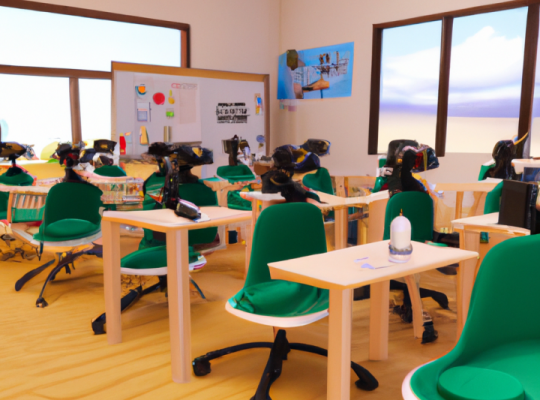The Metaverse, a term coined by science fiction author Neal Stephenson, refers to a shared virtual world where people can interact with each other and with digital objects. As technology continues to advance, the idea of the Metaverse is becoming more and more feasible, and it has the potential to revolutionise the way we approach education.
In this brief article, we will explore the various ways that the Metaverse can be used in education, from virtual classrooms and immersive learning experiences to the creation of virtual worlds for specific subject matter. We will also discuss the potential challenges and limitations of using the Metaverse in education, and how these can be overcome.
By delving into the world of the Metaverse, we can gain a glimpse of the exciting potential that it holds for the future of education.
One way that the Metaverse can be used in education is through the creation of virtual classrooms. These virtual spaces would allow students and teachers to meet and interact in a shared online environment, allowing for real-time collaboration and communication. Virtual classrooms could be used for traditional lectures, group discussions, and even hands-on activities and experiments.
Another potential use of the Metaverse in education is the creation of immersive learning experiences. Using virtual reality technology, students could be transported to realistic, digital representations of historical events, scientific phenomena, or even fictional worlds. This would allow for a deeper level of engagement and understanding of the material being taught.
In addition to virtual classrooms and immersive learning experiences, the Metaverse could also be used to create virtual worlds for specific subject matter. For example, a virtual world could be created for a history class that allows students to explore historical settings and interact with digital representations of historical figures. This could provide a more interactive and engaging way to learn about a particular subject.
One potential challenge of using the Metaverse in education is the issue of accessibility. Not all students may have access to the technology required to fully participate in a virtual classroom or immersive learning experience. In order to overcome this challenge, schools and educators may need to provide the necessary technology to students who may not have access at home.
An additional potential challenge is the issue of cybersecurity. The Metaverse is an online space, and as such, it is vulnerable to cyber attacks and other security threats. In order to ensure the safety of students and teachers using the Metaverse for education, schools and educators will need to implement robust security measures.
Creating and maintaining virtual environments and immersive learning experiences can be expensive. In order to overcome this challenge, schools and educators may need to seek out funding or grants to support the development and use of the Metaverse in education.
Overall, the potential uses of the Metaverse in education are vast and varied. From virtual classrooms to immersive learning experiences, the Metaverse has the potential to revolutionise the way we approach education.
While there may be challenges and limitations to using the Metaverse in education, these can be overcome through careful planning and implementation. With the right approach, the Metaverse has the potential to greatly enhance the way we approach education.

